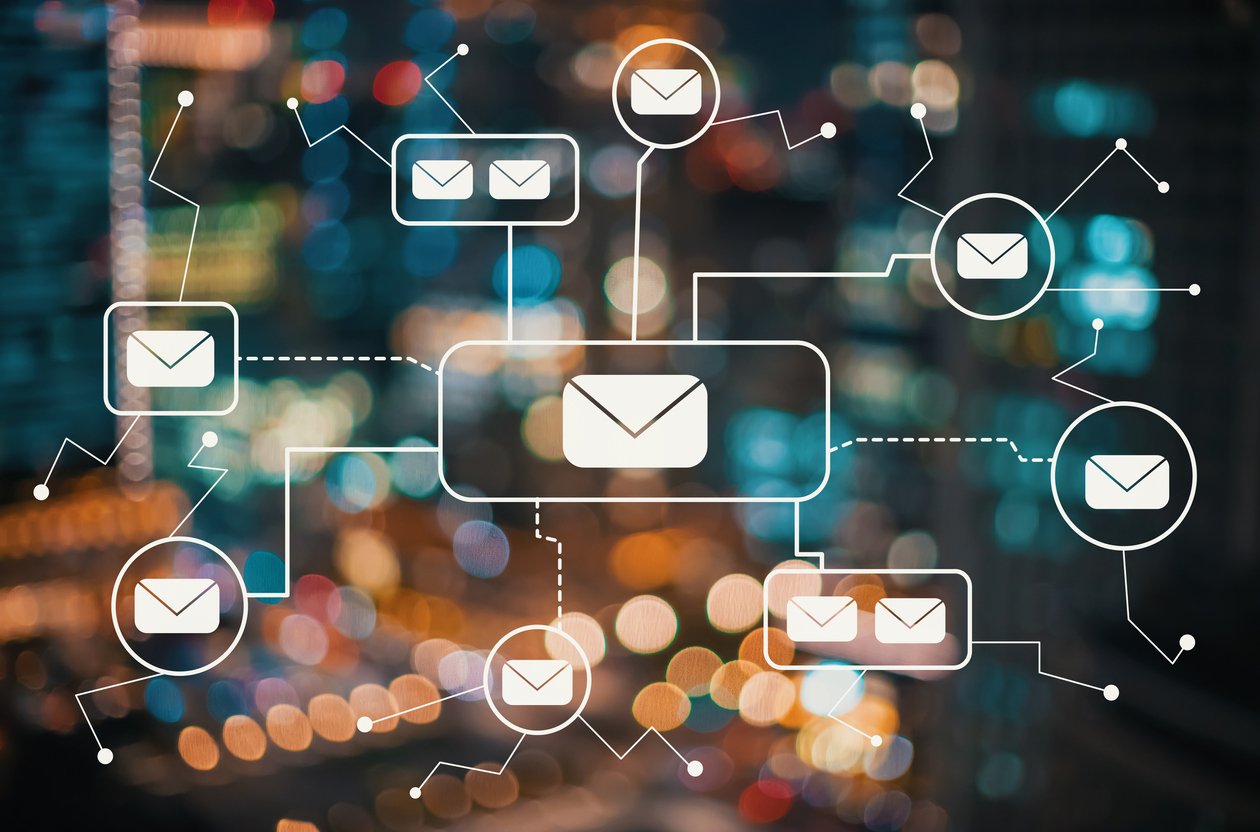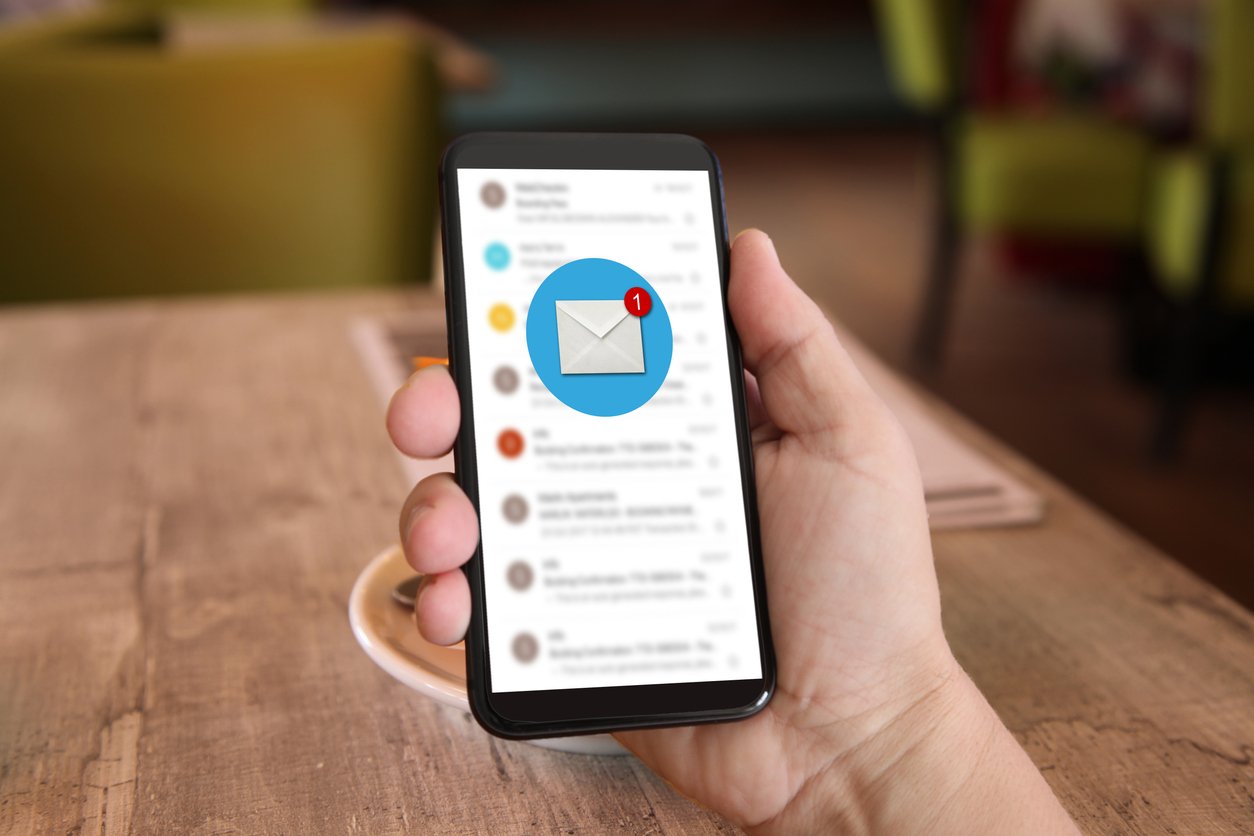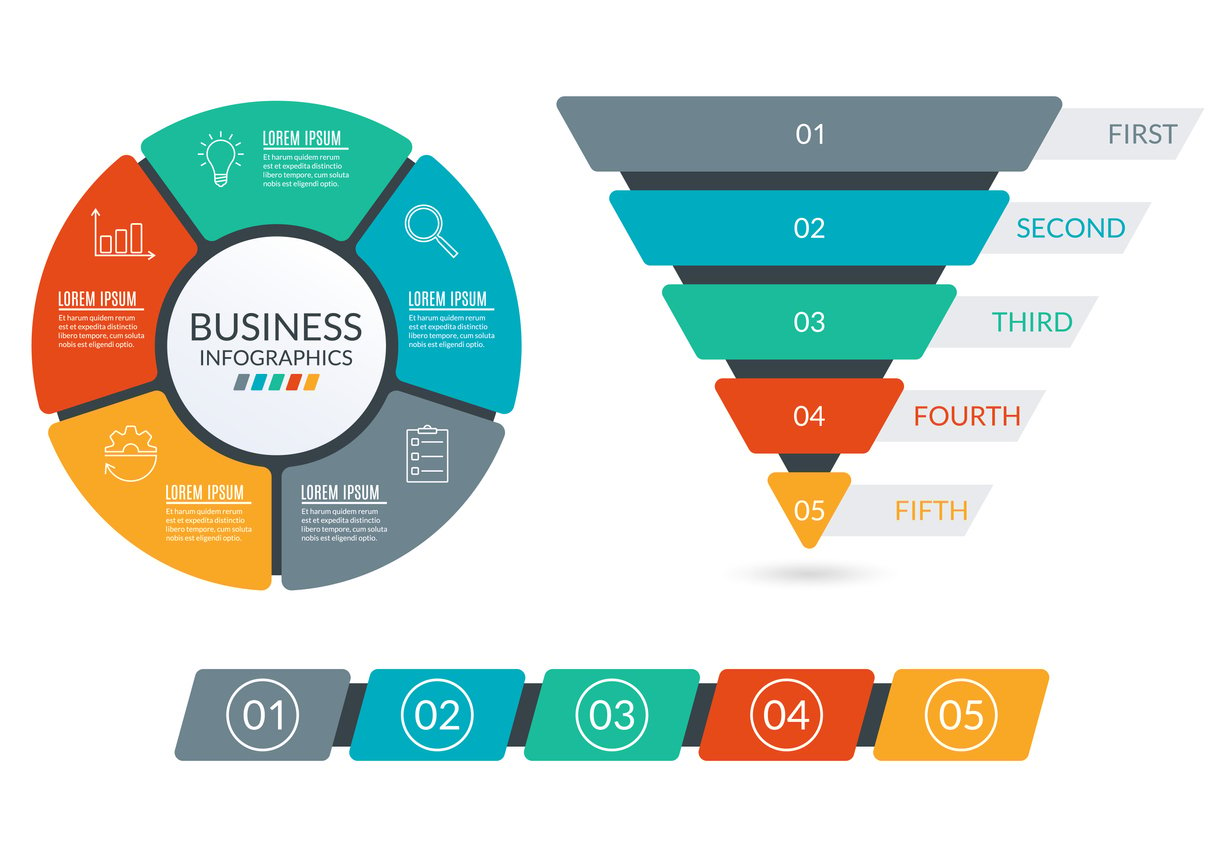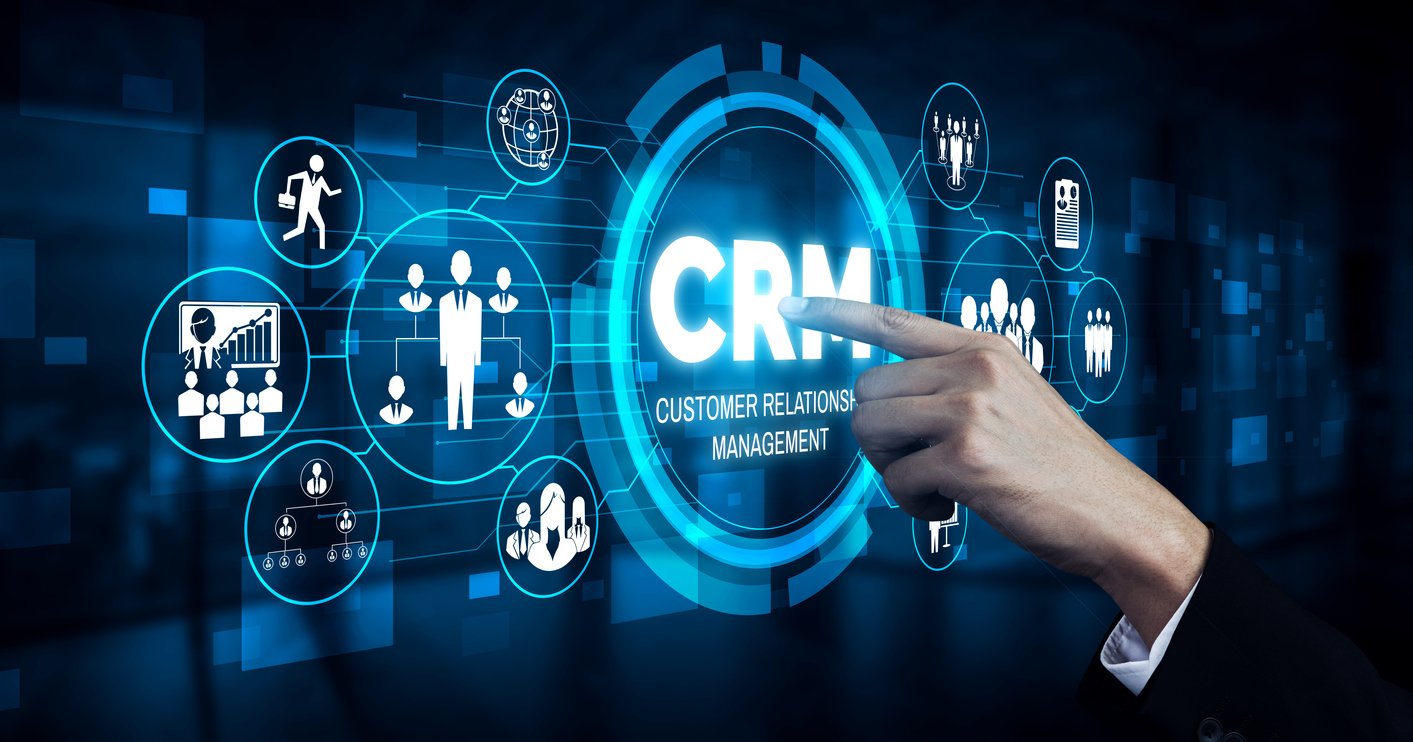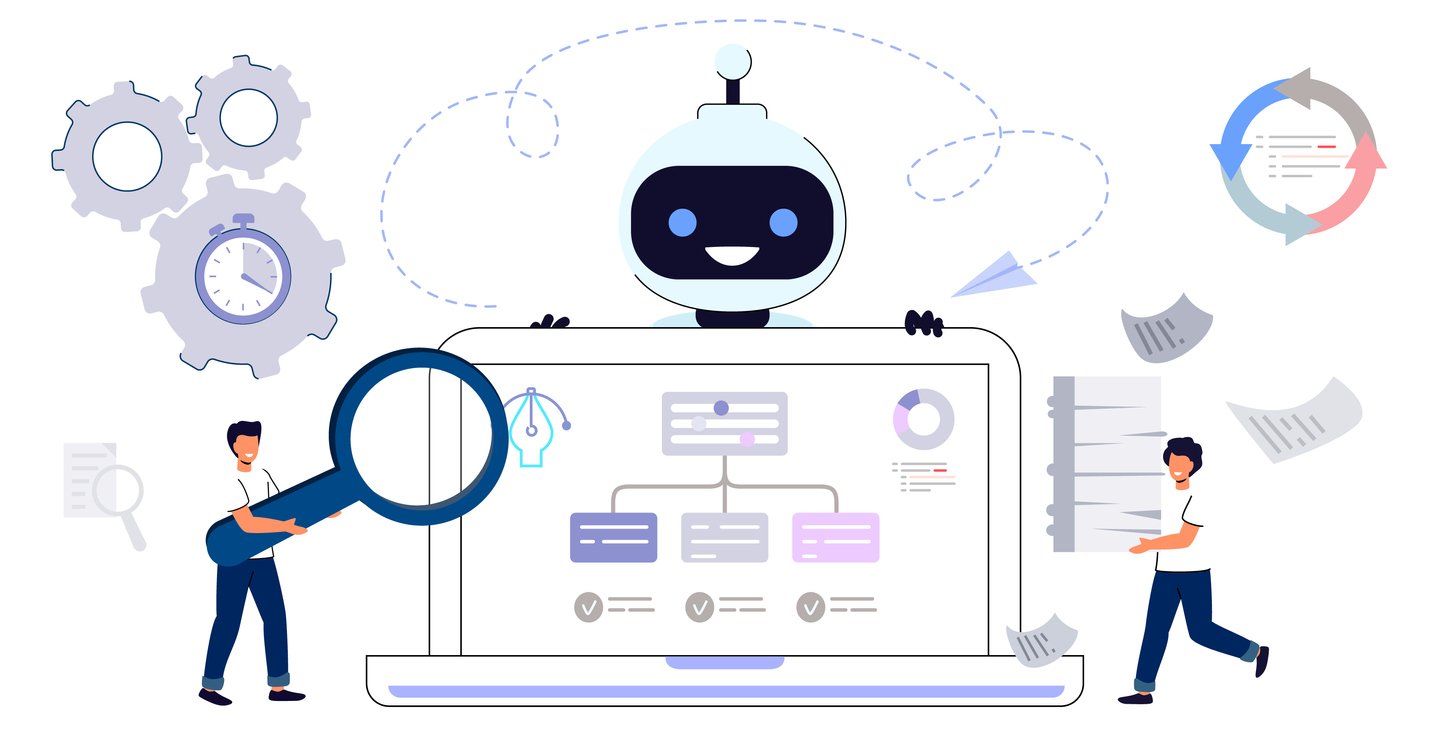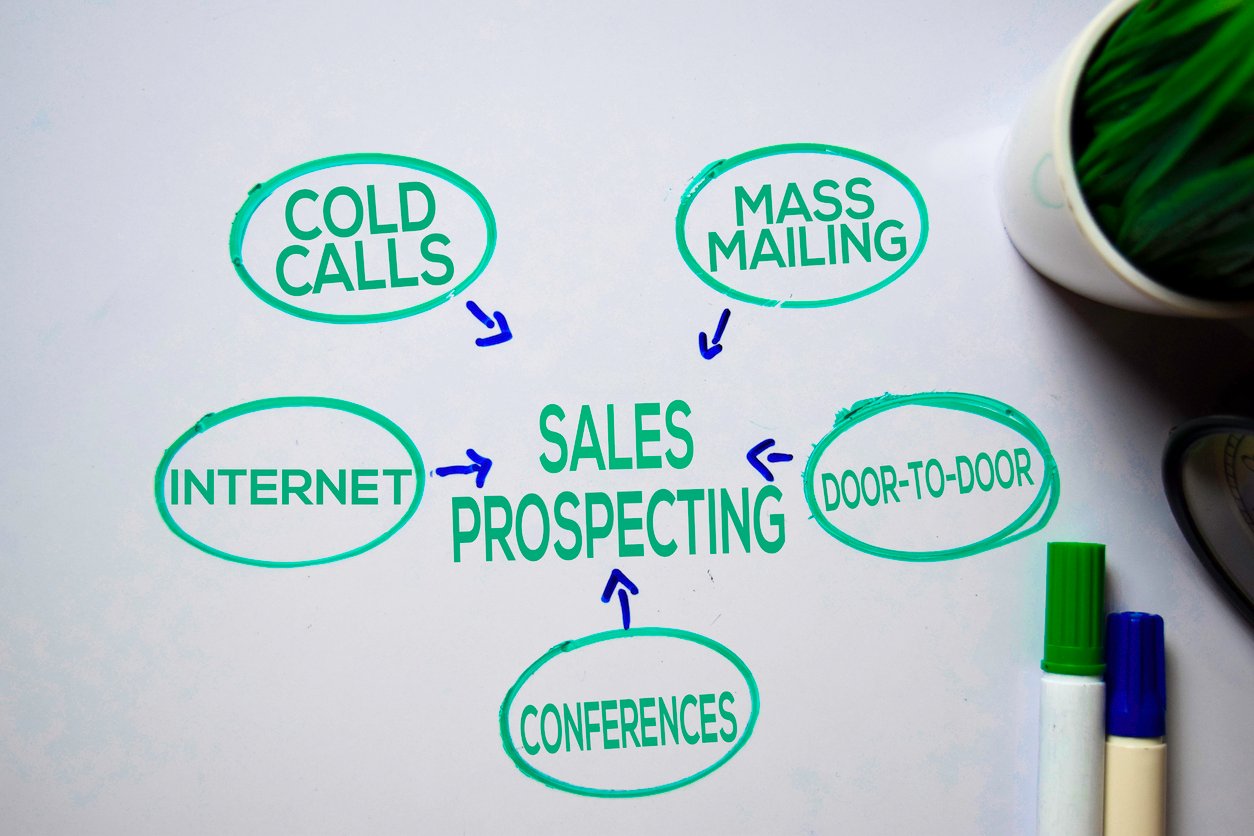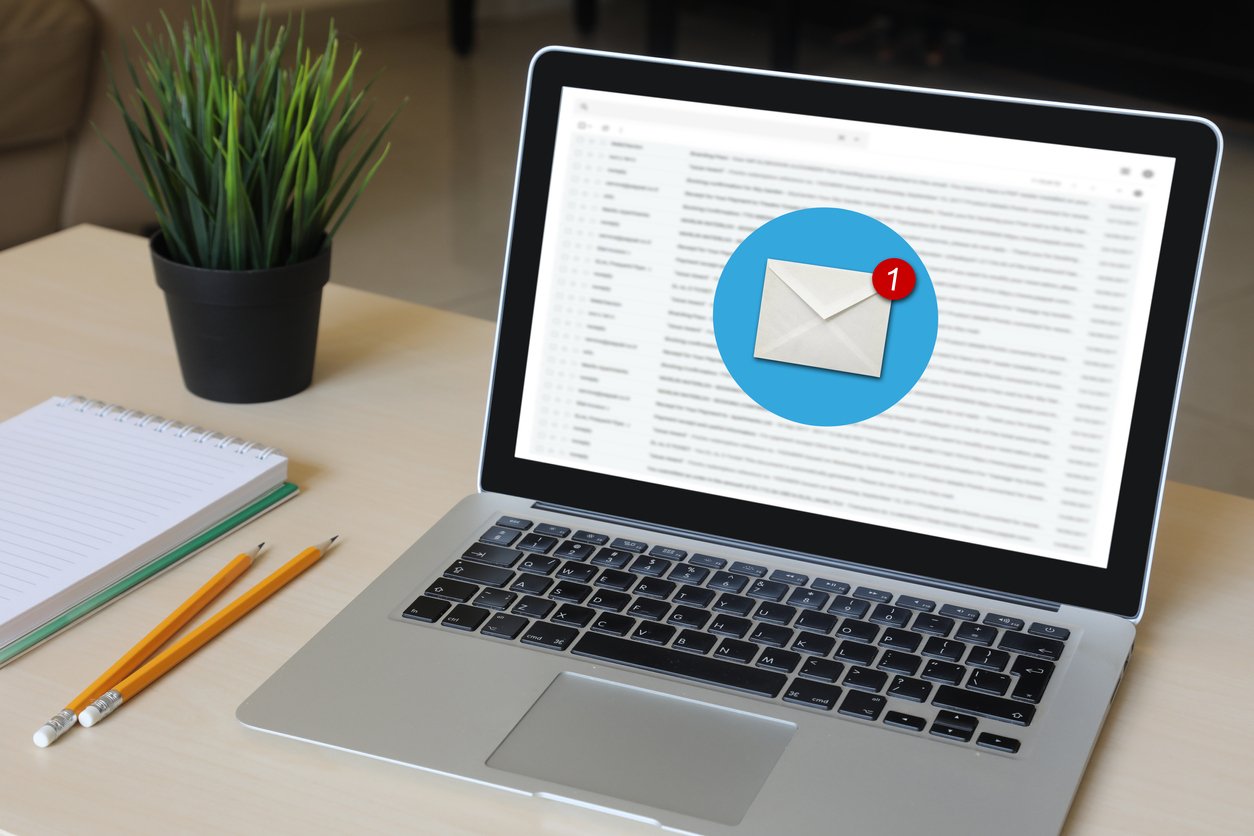
Improving CX with Customer Experience Automation
 Updated on
Updated on
By Ringy
Table of Contents
Table of Contents
With customer expectations higher than ever, you're not just competing on price or product quality anymore—you're competing on the experience you provide.
But why should this matter to you?
Failure to meet these expectations could result in losing customers faster than you can say, "Let me transfer you to another department."
And we both know that's not an optimal situation.
So, how do we mitigate this issue?
With customer experience automation, of course.
Through a customer experience automation platform, you can enhance every touchpoint customers have with your organization.
It can:
- Free up valuable time
- Deliver consistent responses
- Make each interaction feel uniquely personalized
- Boost customer satisfaction and loyalty
By amalgamating automation and customer experience into your strategy, you'll not only improve your client relationships but also see quantifiable results in retention, engagement, and satisfaction.
In this article, you'll learn what customer automation is, its benefits, how to implement it into your strategy, and new trends entering the space.
Because, let's face it, you deserve a CX strategy that works as hard as you do.
What Is Customer Experience Automation?

Customer experience automation (or CX automation for short) involves utilizing technology to automate customer interactions, data management, and workflows that directly impact customer satisfaction.
From automated email campaigns delivering personalized content to chatbots handling routine queries, customer experience automation reshapes how customers move through the buyer's journey.
For example, imagine a customer contacting your company with a service issue. Instead of waiting hours for a human response, an AI-powered chatbot could instantly address their problem or escalate it to a live agent.
Our marketing automation customer experience and CRM platform, Ringy, is another great example of how CX automation works. Ringy's VoIP calling features allow you to automate call scheduling, track customer interactions, and manage follow-ups all in one place.
How Automation Customer Experience Tools Work
Customer experience automation tools integrate with various customer-facing technical systems, including email, chat, social media, and phone systems.
Here are the basics of how they operate:
- Data collection and analysis: Tracking your customer interactions has become the new norm in the digital age, and customer experience automation systems help with that. It could be anything from chat logs to purchase history; the data is analyzed in real-time, allowing you to understand customer preferences and behaviors.
- Personalization as scale: Once the system has extrapolated insights, it can customize responses or offers to each of your customers. For example, if a client frequently purchases a specific product, the platform might send personalized promotions or recommendations based on their buying history.
- Multi-channel integration: Modern customer experience automation platforms, like Ringy, integrate across various touchpoints. This means a customer inquiry received via email can be automatically logged, responded to, and followed up with a phone call if necessary.
- Automated workflows: With customer experience automation tools, you can create pre-defined workflows to handle everyday tasks. For instance, a customer request or a refund can automatically trigger an internal workflow that alerts the relevant team, updates the CRM entry, and sends a confirmation email to the client.
Now, you may be thinking, "Where does that leave me in this situation?"
Well, we assure you that customer experience automation is not here to replace human interaction; rather, it's here to enhance it.
The Role of a Customer Experience Automation Platform
So, how do you choose the right customer experience automation platform to integrate into your strategy?
The key is finding a solution that offers a balance between automation and personalized service—one that allows you to scale without sacrificing the human touch.
Here are a few things to look for when evaluating what customer experience and marketing automation platform is best suited for your business:
- Unified communications: Your customers are engaging with your brand across multiple channels, so using a platform that brings all these interactions into a single place is crucial.
- Sales and marketing integration: A marketing and sales automation platform that integrates your efforts while allowing both teams to collaborate is invaluable. Ringy's sales pipeline management allows you to track leads and automate follow-ups based on customer behavior, ensuring nothing slips through the cracks.
- AI-driven insights: Machine learning and AI are proliferating, meaning predicting customer needs has become easier than ever. These systems learn from customer interactions, becoming smarter and more effective.
- Real-time analytics: Tracking your customer experience and automation efforts in real time helps maintain client satisfaction. Look for platforms that provide metrics like Net Promoter Score (NPS) to give insight into how your automation strategy impacts customer loyalty.
Considering a customer experience automation platform that matches your organization's needs, gives you the ability to deliver a more personalized and efficient experience to the people who make your business move—customers.
Benefits of Customer Experience Automation

When running a business, your customers expect nothing short of excellence. One of the most effective ways to exceed their expectations is by automating certain aspects of your customer experience.
Let's examine some of the biggest advantages of customer experience automation and how it can propel your organization into the stratosphere.
|
Benefit |
Explanation |
Impact on Your Business |
|
Faster Response Times |
Customers expect quick responses, and delays can drive them to competitors. Automation tools like chatbots and automated emails help you respond instantly. |
By reducing response times, you can meet customer expectations and prevent losing them to competitors. |
|
Personalization at Scale |
As your business grows, manual personalization becomes difficult. Automation analyzes customer data to deliver tailored messages and recommendations automatically. |
Automated personalization increases engagement and customer loyalty. Over 62% of consumers expect tailored offers. |
|
Improved Customer Retention |
Automation allows you to deliver consistent service across all channels, ensuring no customer is forgotten. Tools like Ringy help you automate follow-ups. |
A higher retention rate means less churn, helping you save on customer acquisition costs while maintaining relationships. |
|
Higher Customer Satisfaction |
By removing friction in the customer journey, automation helps streamline interactions, making customers feel valued and supported. |
Businesses often see a 20-30% increase in satisfaction when they automate key parts of their CX strategy. |
|
Measurable Improvements |
Automation lets you track and measure critical KPIs like customer retention, engagement, and NPS, giving you a clear picture of your CX performance. |
Higher NPS and retention rates translate to more loyal customers, more engagement, and better long-term business results. |
With customer experience automation, you can meet customer demands for faster, more personalized service while boosting satisfaction and retention.
And, as your business continues to dilate, the measurable improvements automation brings will ensure you stay ahead of the ever-evolving curve—keeping your customers loyal and happy.
Implementing Automation in Your Customer Experience Strategy

If you're ready to start your customer experience automation journey, we've got the rundown for you.
Here's how to get started:
Assess Your Current Customer Experience Strategy
A thorough assessment of your existing customer experience strategy should be performed to establish a solid foundation for automation implementation.
Take the time to identify where the bottlenecks occur by asking questions similar to the following:
- Are customers frequently left waiting too long for a response?
- Is there a lack of personalization in customer interactions?
- Are your customer support representatives overwhelmed by repetitive tasks that could easily be automated?
By probing these questions, you'll pinpoint the areas where customer experience automation can add the most value.
For instance, if you notice that emails or social media inquiries take forever to respond to, that's a clear sign that response times could significantly improve by implementing an autoresponder or chatbot.
Taking this first step ensures that you don't implement customer experience automation just for the sake of it. Instead, you're aligning automation and customer experience with specifics to produce tangible improvements in the buyer's journey.
Select the Right Tools
Now that you've identified the areas of your customer experience strategy that could benefit from automation, the next step is to select the most appropriate tools to do the job. Not all customer experience automation platforms are created equal, so choosing the one that fits your business needs is paramount.
Is phone communication your primary channel for customer service?
If so, remember Ringy is a VoIP calling CRM that could fit snugly in your tech stack. Our sales software is perfect for organizations with high call volumes, such as remote sales teams or insurance agencies.
Does your business rely heavily on email or live chat?
Our AI-powered responder and automated workflows are here to assist you. These AI tools help you quickly and accurately respond to common customer questions, freeing up your team to deal with more complex or high-priority issues.
Map Out Your Workflows
Automation thrives on well-designed workflows.
Now that you've chosen the right customer experience automation tools, it's time to start mapping out the various touchpoints and interactions that require automation. Many organizations make the big mistake of trying to automate too much at once.
You need to look at the key stages of your buyer's journey and focus on creating customer-centric workflows around these important points in time.
For example:
- After a purchase: Automatically send a thank you email with personalized product recommendations based on the customer's purchase history.
- Lead nurturing: Set up an automated email series that gradually introduces your services to new leads, nudging them along their decision-making process.
- After a support interaction: Trigger a survey asking for feedback on their experience, providing you with valuable data to improve custom service.
Don't forget that Ringy allows you to schedule follow-ups based on customer interactions, ensuring that no lead or client is ever forgotten. Automating these workflows saves your team from performing repetitive tasks and ensures that your customers receive timely and consistent communications.
Monitor and Optimize
Hold up, wait a minute.
The work doesn't stop once you've set up your automated workflows. If you plan on maximizing the advantages of customer experience automation (and who wouldn't?). It's important to monitor and optimize your system continuously.
Customer experience automation platforms come with analytics dashboards for insight and reports into key metrics such as response times, engagement rates, and customer satisfaction.
For example, Ringy provides detailed reports on customer behavior, helping you understand how consumers are interacting with your brand and where tweaks can be made. Are customers responding positively to automated follow ups? Are response times improving? These are just two of the aspects you can dive into when reviewing analytical data.
Use this data to identify which areas are performing well and which ones require adjustments. For instance, if you notice that customers are not engaging with certain automated emails, you may need to tweak the messaging or timing to make them more relevant. Approaching customer experience automation with an iterative mindset allows you to fine-tune your automated process for optimal results (and we all want those!)
Train Your Team
Even though these systems can handle a significant portion of customer interactions, your team is still at the front line, providing outstanding customer experiences with automation. Your employees need to be familiar with the automation tools you've implemented and how they complement human intervention.
Luckily, at Ringy, we offer free onboarding for you and your employees to discover the full potential of our product. When your employees understand that automation is there to support them, not replace them, they can focus on higher-value tasks, like handling complex issues or building stronger bonds with customers.
Moreover, knowing when to take the wheel and override a customer experience automation system is just as important as setting it up in the first place.
Overcoming Challenges in Automation Customer Experience
While automation can greatly enhance your customer experience, be mindful that potential hurdles may appear from time to time. Addressing these obstacles head-on ensures that your customer experience automation effort leads to better relationships, improved satisfaction, and long-term success.
In this table, we break down the common challenges enterprises face when integrating automation into your CX strategy, and what you can do the address them:
|
Challenge |
Description |
Solution |
|
Maintaining a Human Touch |
Automation can sometimes feel impersonal, leaving customers feeling disconnected. Especially for complex or sensitive issues, a lack of human interaction can negatively impact satisfaction. |
Balance automation with human interaction. Make sure automated responses are warm, friendly, and empathetic. Always provide easy ways for customers to escalate issues to a live representative when needed. |
|
Data Privacy and Security |
Automation relies on customer data to personalize experiences, which raises concerns around privacy and security. Customers want reassurance that their information is safe and protected. |
Use automation tools compliant with data regulations (e.g., GDPR, CCPA). Implement encryption and robust security protocols. Clearly communicate your data protection measures to build customer trust. |
|
Integration with Existing Systems |
Without proper integration, your automation tools may not work smoothly with your CRM, customer support software, or other platforms, leading to fragmented customer experiences. |
Select automation tools that integrate well with your existing systems. Alternatively, opt for all-in-one platforms like Ringy to avoid compatibility issues and streamline your customer interactions. |
Dealing with these challenges early on will set you up for success as you begin implementing automation into your strategy. For instance, ensuring that customers have the option to escalate to a human representative can resolve concerns about impersonal service.
Never forget that automation is meant to enhance—not replace—human connection.
As you iterate your approach, the benefits of automation customer experience improvements become evident. Concentrate on key areas that help ensure your automation efforts yield the best possible result for your organization and its customers.
Future Trends in Customer Experience Automation

As technology continues to proliferate, so will customer experience automation. Growing technologies such as artificial intelligence, machine learning, and the Internet of Things (IoT) are poised to take customer experience automation to new heights.
The first technologies we want to discuss are AI and machine learning, two behemoths that have emerged in recent years. Since data is the new oil, it still needs to be refined to be used. Artificial intelligence and machine learning technology can analyze huge amounts of data in real time, allowing you to gain valuable insight into consumer behavior and predict what they need before they even ask for it.
For example, an AI-driven customer service tool can recognize the tone and context of a customer's inquiry and respond accordingly. If a client is frustrated, the AI can escalate the issue to a human agent or offer a personalized solution to ease their concern.
As AI becomes smarter, you'll be able to offer hyper personalized experiences that feel tailor-made for each customer, increasing:
- Satisfaction
- Loyalty
- Retention
Machine learning, on the other hand, takes this a step further by continually improving the quality of your automated interactions based on past customer data. For instance, ML algorithms can predict when a client might churn and trigger actions like sending a special offer or a follow-up automated text message.
The more data your system collects, the better it will be at predicting customer needs and delivering proactive solutions.
Another future trend to watch out for is the Internet of Things (IoT). This technology refers to a network of interconnected devices—from smartphones and watches to home appliances—that can communicate with each other and share data. As a company proprietor, this opens up new ways to engage with your customers and provide more intuitive experiences.
Imagine a scenario where a customer's smart refrigerator alerts them that they are running low on milk and then automatically places an order with your grocery delivery service. Or, think about how wearable devices could notify your customer service team when a customer is having an issue with one of your products, prompting an automated outreach to resolve the problem before they even contact you.
This trend is especially relevant for industries such as:
- Retail
- Healthcare
- Automotive
- Financial services
IoT allows you to take a proactive, personalized approach to customer service while strengthening customer loyalty.
The Future of Automation and Customer Experience
It's clear to see that automation is transforming customer experiences across various industries, and the future holds even more exciting possibilities. As organizations continue to adopt automation technology like AI, machine learning, and IoT, the buyer's journey will become more seamless, personalized, and efficient.
Let's explore how these advancements will shape the future of customer experience and what you, as a business owner or marketer, should anticipate and embrace in the years to come.
|
Key Trend |
Description |
Impact on Customer Experience |
How to Leverage It in Your Business |
|
Proactive Engagement |
Automation will shift from reactive to proactive customer engagement by predicting customer needs and reaching out before they ask. AI and predictive analytics will enable this. |
Customers will feel valued and understood, leading to higher satisfaction and loyalty. Businesses that can anticipate needs will stand out in competitive markets. |
Use AI-powered tools like predictive analytics to anticipate customer needs (e.g., warranty expiration reminders or product recommendations). Automate these engagements for consistent customer interaction. |
|
Hyper-Personalization |
Hyper-personalization involves tailoring each interaction in real-time using customer behavioral data, preferences, and purchasing history. |
Increases customer loyalty by delivering highly relevant, personalized experiences that make customers feel recognized and valued. |
Use AI and machine learning to analyze customer data in real-time and create highly individualized touchpoints (e.g., personalized promotions or product suggestions based on current behaviors). |
|
Omnichannel Integration |
Customers expect seamless interactions across all channels—whether online, in-store, via phone, or social media. Automation will ensure continuity across these platforms. |
Customers will enjoy a consistent, frictionless experience across all touchpoints, reducing frustration and improving engagement. |
Integrate your automation tools to unify customer interactions. For example, use CRM automation (like Ringy) systems that track customer history across all platforms to provide a seamless journey. |
|
Conversational AI and Voice Interaction |
Voice assistants like Alexa and Siri will be integrated into customer experience strategies, offering hands-free, conversational interactions. |
Enhances customer convenience, offering quicker resolutions and reducing the need for manual searches. Drives engagement and satisfaction, especially in industries that value speed. |
Invest in conversational AI tools and voice interfaces that allow customers to interact with your brand using voice commands for tasks like checking order status or troubleshooting issues. |
|
AI-Driven Self-Service |
AI-powered self-service tools will become smarter, offering customers the ability to solve more complex issues independently. |
Reduces customer wait times and dependency on human agents while improving satisfaction with quick, accurate problem resolution. |
Implement AI-driven chatbots and self-service portals that guide customers through troubleshooting and issue resolution. Make sure these tools learn from interactions and can escalate complex cases to human agents when needed. |
|
Balancing Automation with Empathy |
While automation is efficient, it's important to maintain a human touch in customer interactions, especially for complex or emotional issues. Automation should support, not replace, human connection. |
Ensures that customers feel heard and understood during sensitive interactions. Helps build trust and long-term loyalty by humanizing the customer experience. |
Use automation for repetitive tasks, but ensure human agents handle complex, emotional, or sensitive issues. Use AI tools that detect when to escalate interactions to a live representative. |
The true power of automation lies in its ability to support, not replace, the emotional and empathetic side of customer service. Balance the two, and you'll create a future-proof strategy that delights customers and drives long-term success.
Boost Your Customer Experience Automation Efforts With the Right Software

As customer expectations continue to evolve, your business must adopt tools that enhance engagement while still maintaining a human touch. Automation allows you to anticipate customer needs, offer real-time support, and streamline processes that were once manual and time-consuming.
However, it's important to remember that while automation offers immense benefits, it works best when complemented by empathetic human interactions—especially in complex or emotional situations.
If you're looking for an all-in-one solution to automate your customer experience, we'd like to suggest giving Ringy a bash. With its powerful VoIP calling, sales pipeline management, CRM and customer behavior insights, Ringy is designed to meet the demands of modern businesses.
Request a demo and start letting automation work for you!

Skyrocket your sales with the CRM that does it all.
Calling? Check. SMS? Check. Automation and AI? Check. Effortlessly keep in touch with your customers and boost your revenue without limits.

Take your sales to new heights with Ringy.
Sales in a slump? Ringy gives you the tools and flexibility you need to capture leads, engage with them, and turn them into customers.
Subscribe to Our Blog
Enter your email to get the latest updates sent straight to your inbox!
Categories
Related Articles





